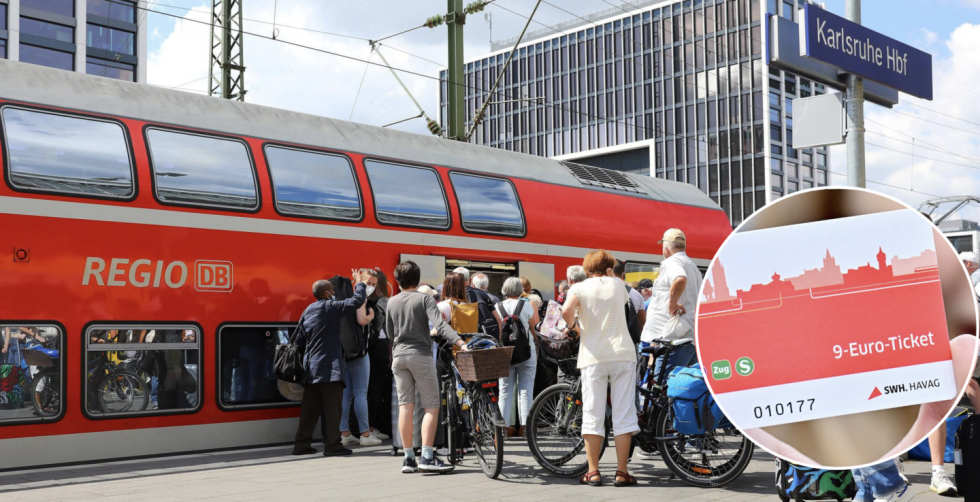
The German government’s recent nationwide initiative, which enabled everyone to travel on public transport for 9 Euros per month throughout the summer, prompted a tremendous amount of conversation within the transport industry, government and media – both in Germany, as well as across Europe.
With governments everywhere grappling with the energy crisis and looking for ways to alleviate the impact of skyrocketing inflation, could such an initiative have sufficient impact to make a difference in people’s day-to-day lives? Furthermore, with ambitious climate goals ever so slowly translating into initiatives with measurable positive outcomes, could such drastic price incentive entice people to swap car journeys for public transport?
Teralytics has been monitoring the initiative’s impact since its introduction on the 1st of June, keen to understand whether it may prove to have a lasting effect. Our data has also been used by the Federal Statistical Office of Germany, Destatis, as well as the media to understand its impact.

The immediate impact was clear – the number of train journeys skyrocketed and remained high all the way till the end of the initiative on the 31st of August. Our data analysis was consistent with that of our partners. Destatis noted the 42 percent increase in rail travel in the first month of the initiative compared to the same time period in 2019. Zeit Online called the interest in rail travel enormous.
After the initial awe, two follow-on questions were on everyone’s mind: Has the road traffic been reduced due to the initiative?; and What’s likely to happen once the initiative ends?
Many factors impact people’s preferences when it comes to mode of transport – accessibility, convenience, length of journey and weather conditions being just some of them. The timing of the 9 Euro ticket initiative over the summer also meant that the seasonal effect of summer holidays had a significant impact on how the initiative played out.

We analyzed rail and road trips throughout the summer and drew a comparison between the same time period in 2019 and 2022. The above graph tells the story most effectively – while we saw an increase in over 40 percent in rail trips during this time, road trips over 30 km also decreased by a few percentage points throughout. While the percentage change may not seem large, in absolute terms it means that a meaningful number of what would have been car journeys became train journeys over the summer. Note the near immediate return to the levels observed in May once the initiative ended.
This is consistent with the analysis done by VDV, the Association of German Transport Companies, which concluded that out of some 52 million rail tickets sold in this time period, one in ten buyers forewent at least one of their daily car journeys.
In order to add some color to the nationwide analysis, we also looked at how the initiative played out across a number of city pairs in Germany. The Berlin – Rostock connection needs little introduction, as the media used this popular summer holiday origin-destination pair as an example of train overcrowding this summer.

Here we compared the 9 Euro ticket period with time directly before and after (full May and Sept up until now). While we can see an increase in road trips, the increase in train trips is remarkable – over 250% for certain weekdays.
A very different city pair, Düsseldorf – Köln, is one of Germany’s most frequented commuter connections. This 45km long city-to-city center journey is well connected both by train and road. We wondered whether the initiative would impact modal split in this prominent commuter scenario.

Here, a clear decrease of approximately 10% in road traffic can be observed on weekdays. As this is a May to September 2022 comparison, the effects of more people working from home post pandemic can be ruled out.
So what conclusions can policy makers and transport authorities worldwide draw from this? Behavioral change is notoriously difficult to achieve when it comes to influencing people’s mobility decisions. Is it then worth investing in such initiatives at a large scale?
Looking at the data – absolutely.
The carbon emission reduction targets in transport cannot be achieved without meaningful nationwide policies. We can not stop at simply setting the targets, but must do the hard work to get there. Our customers in Italy understand this firsthand, as cities throughout the country are now tasked with monitoring the impact of their Sustainable Urban Mobility Plans and updating their strategies accordingly.
Ongoing commitment and iteration of initiatives based on their impact is critical for the creation of truly sustainable communities where public transport is central to people’s mobility choices. We look forward to seeing the impact of similar initiatives in Spain, the UK and beyond.